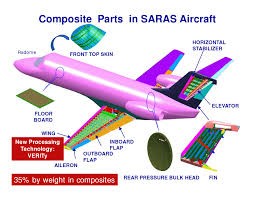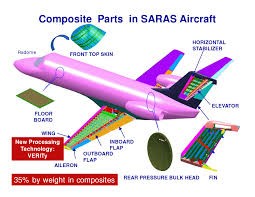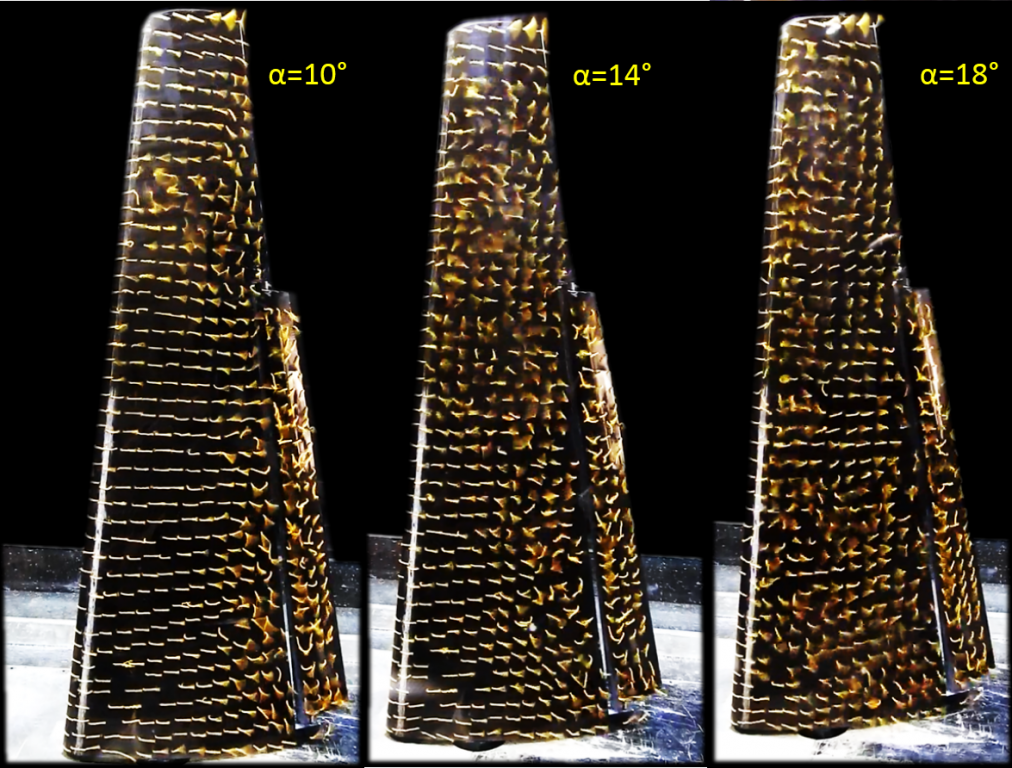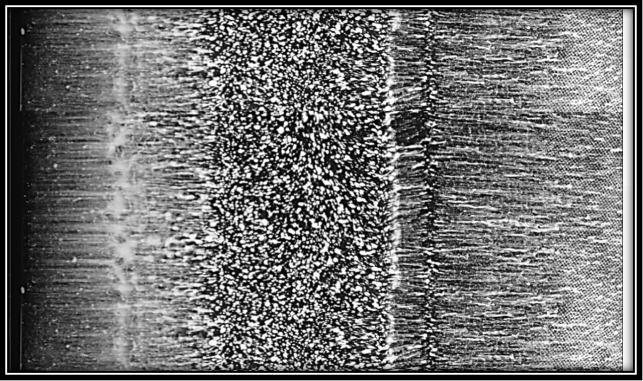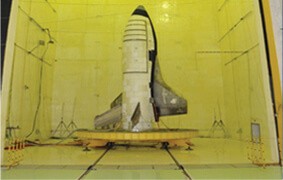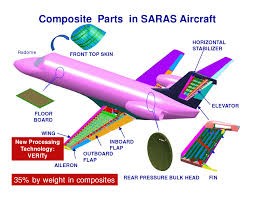
SchlierEN
- Schlieren (from German; singular "schliere") are optical inhomogeneities in transparent material not visible to the human eye.
Schlieren flow visualization is based on the deflection of light by a refractive index gradient. The index gradient is directly related to flow density gradient. As shown in Fig. 1 a “point” light source (S), is collimated by a first lens which focal point coincides with the location of the source. Then the parallel light rays pass through the test section and a second lens refocuses the beam to an image of the point source. Transparent schlieren objects are not imaged at all until a knife-edge is added at the focus of the second lens. The deflected light is compared to un-deflected light at a viewing screen. The undisturbed light is partially blocked by a knife edge. The light that is deflected toward or away from the knife edge produces a shadow pattern depending upon whether it was previously blocked or unblocked. This shadow pattern is a light-intensity representation of the expansions (low density regions) and compressions (high density regions) which characterize flow. For this particular point of the schlieren object, the phase difference caused by a vertical gradient ∂n/∂y in the test section is converted to an amplitude difference and the invisible is made visible, Fig. 2.
A word about the orientation of the knife-edge: here shown horizontal, it detects only vertical components ∂n/∂y µ ¶r/∂y in the schlieren object. That is, a simple knife-edge affects only those ray refractions with components perpendicular to it. If the gradients in the schlieren object are mainly horizontal - ∂n/∂x µ ¶r/∂x, then the knife-edge should be placed vertically in the focus of the second lens.
2. High Speed Imaging
High speed imaging methods further extend our ability to capture the otherwise invisible events that are too fast for us to see with a normal camera. In this case, a single image of sufficiently-short exposure time provides the necessary critical insight. Exposure time plays a central role in freezing the motion of flow structures which helps gain better insight into the flow phenomena and also enhance quality of image acquired. This is desired as long exposures average out turbulence and reveal weak stationary phenomena while short exposure freezes all motion, turbulence included. Thus the sensitivity of schlieren system also depends upon the exposure time. Fig. 3 (a) shows the schlieren image of a flow over an afterbody using a Pal-Flash (Model 501/S) with a flash duration of 750ns. The same can be achieved if you have a continuous light source but a high speed camera capable of taking thousands of pictures in a second. Figure 3 (b) shows a schlieren picture taken with a 2000fps (1024 x 512 resolution) FASTCAM-X PCI high speed PHOTRON camera with a continuous light source.
3. COLOR SCHLIEREN SYSTEM
3.1 Need for Color Schlieren
In black and white Schlieren, the image of the investigated flow shows density gradients in different shades of grey. With a color schlieren technique these refractive index gradients are visualized by different colors, which are easier to distinguish for the human eye than the different shades of grey 2,3. Further the conventional black and white Toepler schlieren system displays only those refractive index gradients which deflect light normal to its knife-edge. But color schlieren technique can be used to produce an image in which refractive index gradients in all radial direction are displayed and directionally color-coded. This provides an extra dimension and added sensitivity to the various flow features by enhancing the contrast of the displayed information. In addition to wind tunnel flows, this technique has a very important application in strongly particle laden flows where additionally a reduction of the light intensity on the image is caused by scattering, absorption, etc. by the particle phase itself 4. So the interpretation of the occurring processes is more difficult in scales of grey.
3.2 Color Schlieren in the Simplest Form
Reinberg5 was the true inventor of color schlieren. He used a two-color cut-off filter that produced an image equivalent to the standard black and white schlieren, except that the gray scale is now replaced by a two-color-mixture scale with an added sensitivity gained from color contrast. The two-color filter has had modifications over the years leading to a wide variety of filter designs. These have been used very commonly in laboratories world-over, including NAL. However, with this type of arrangement other than the added contrast by color-filter no additional information is gained relative to the conventional black and white schlieren system, Fig. 4.
Figures 5 (a) and (b) show the color schlieren images of an overexpanded thrust optimized parabolic nozzle (NPR=35, area-ratio=30 and design Mach number 4.5) taken using such a dissection technique with knife edge in horizontal and vertical positions, respectively. The set up uses a Xenon flash light by Drello with a flash duration of 13ms and a flash energy of 18 J. Figure 6 shows color schlieren images from an overexpanded truncated ideal contour nozzle (area-ratio =20, NPR=60 and design Mach number 4). The clarity of flow details and the added contrast to the image shows the importance of adopting such a technique.

 English
English हिन्दी
हिन्दी